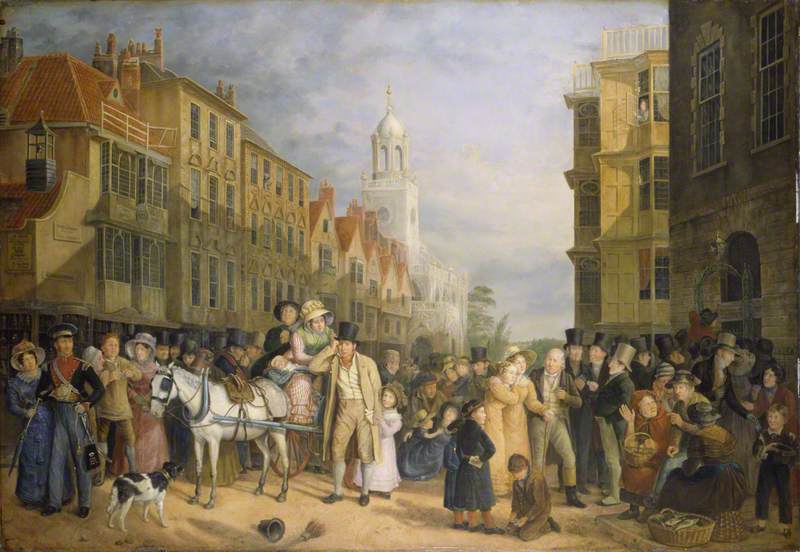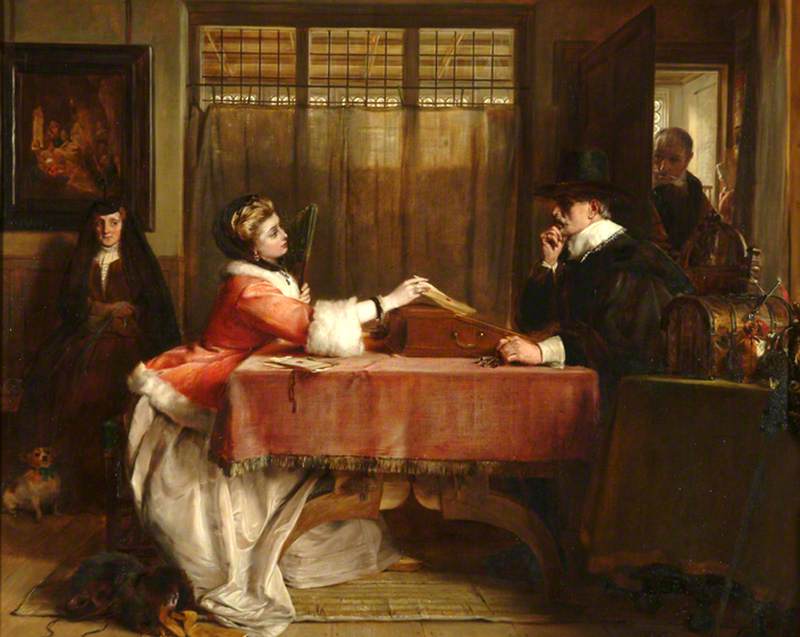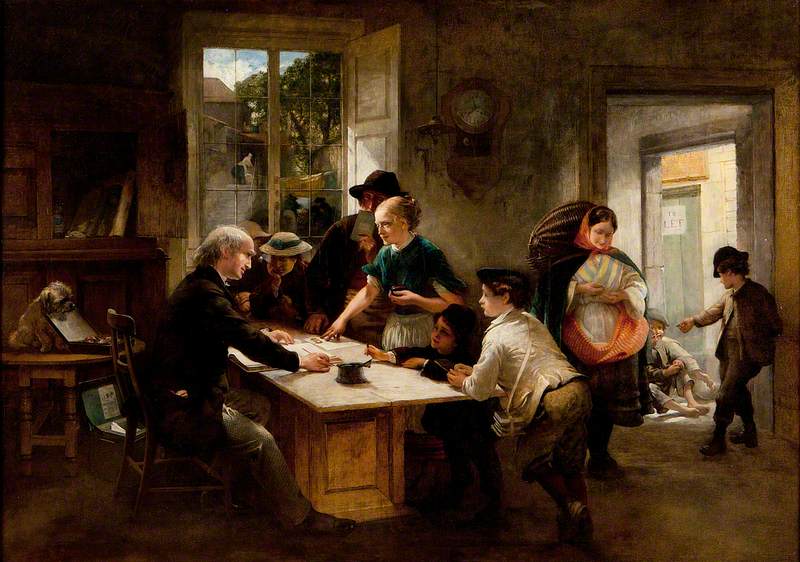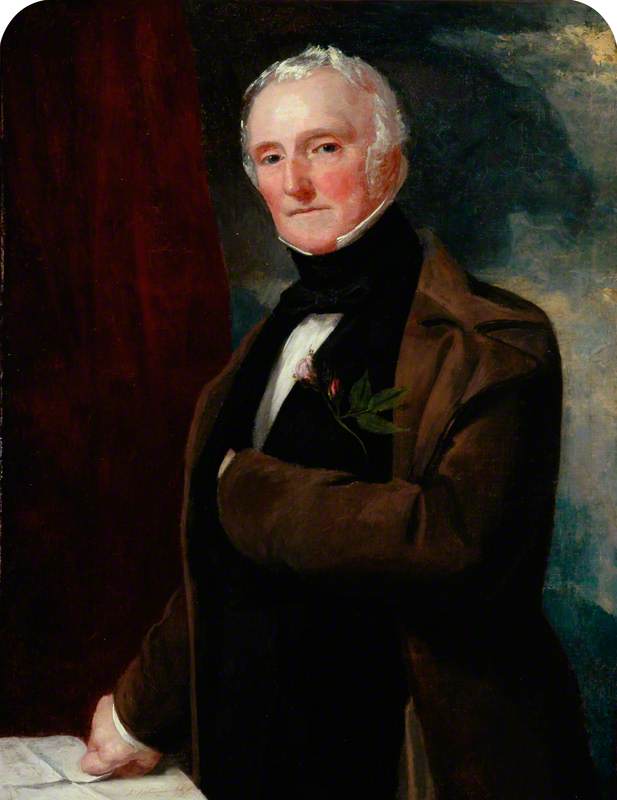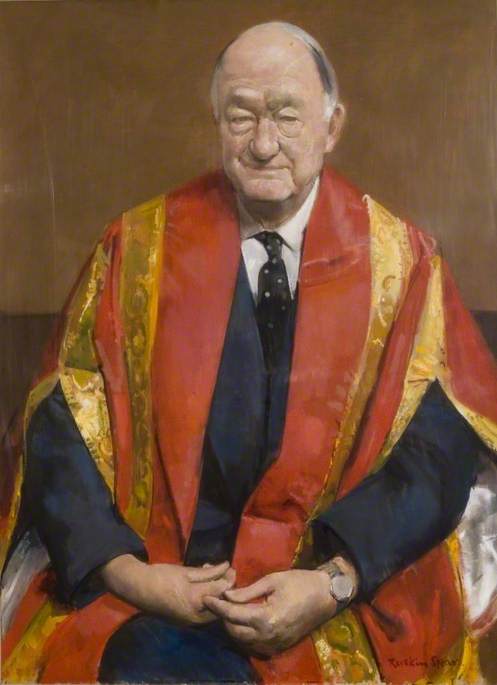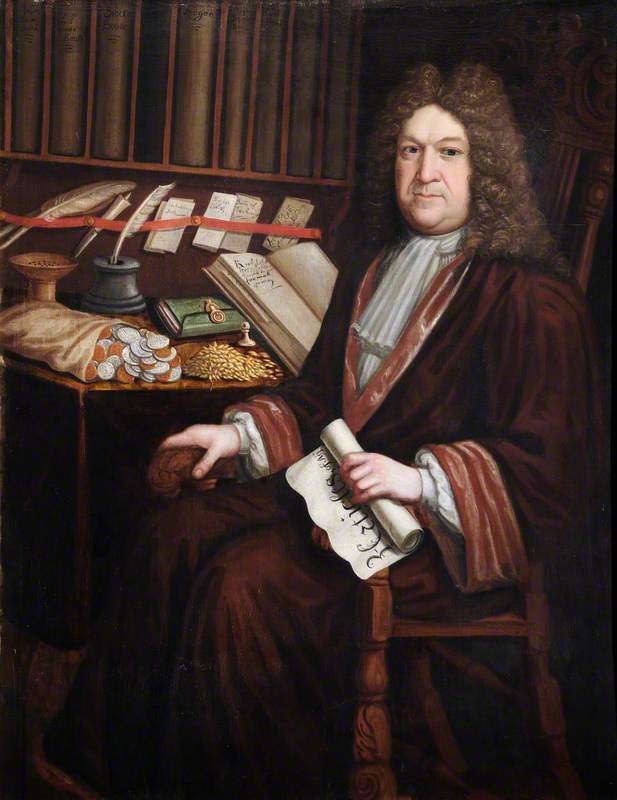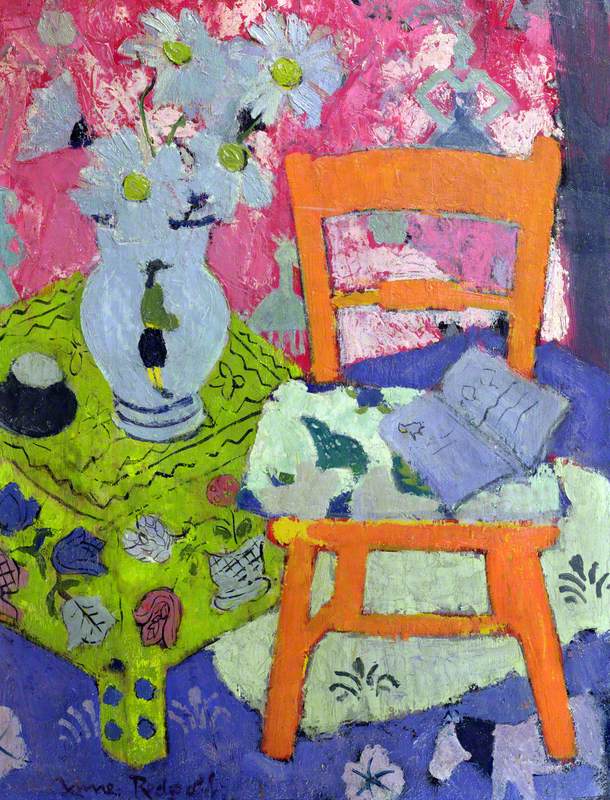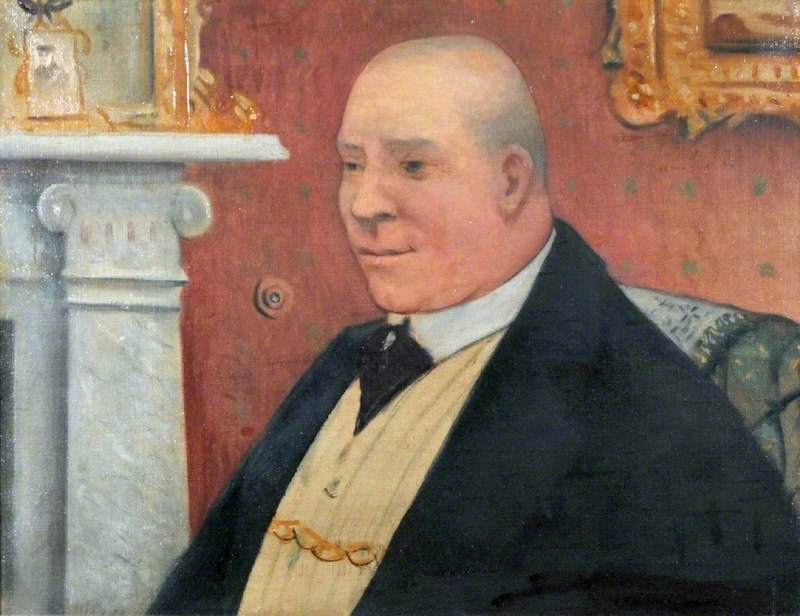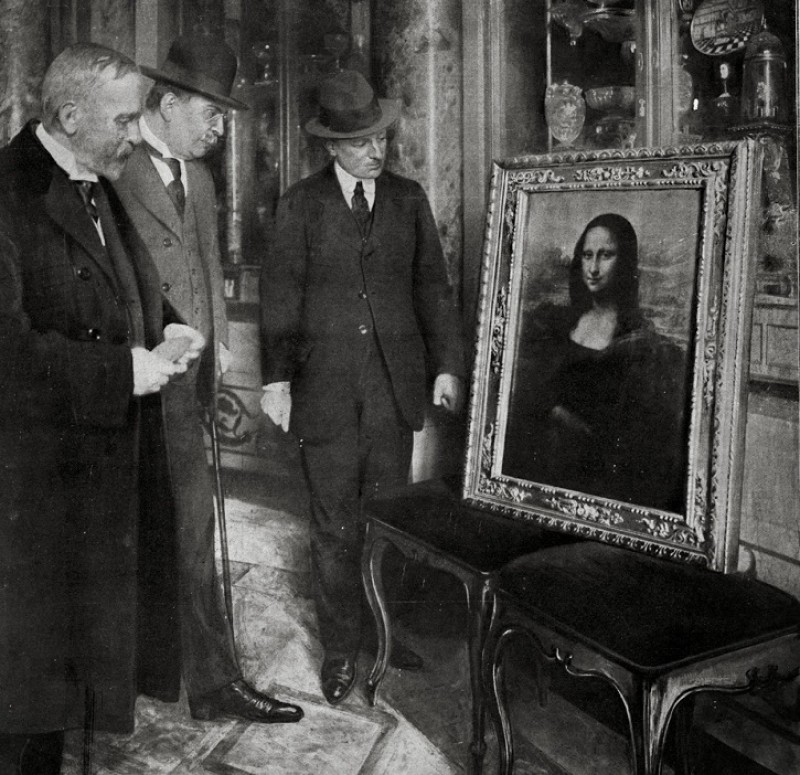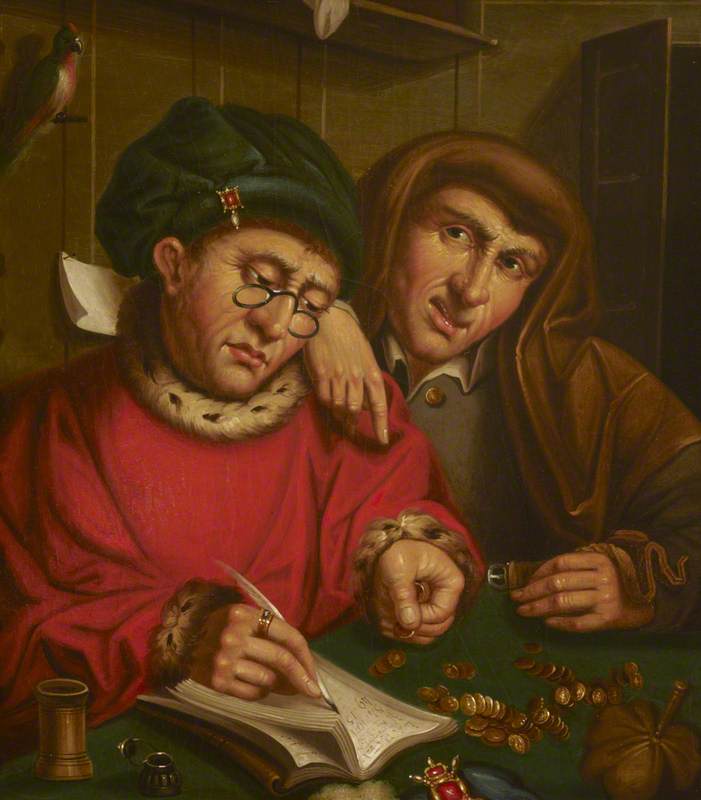
Banks are prestigious buildings in townscapes, and so feature incidentally in some urban landscapes and topographical paintings. The Bank of England, in particular, is an important and prominent London institution. The Bank’s own collection includes portraits of its founders and governors, sometimes posed undertaking its administrative activities.
Hick’s Dividend Day at the Bank of England is a rare attempt to make financial events visually dramatic, although there are a few other nineteenth-century narrative paintings, such as the anxious customers in Horsley’s The Banker’s Private Room and Harvey’s The Penny Bank.
